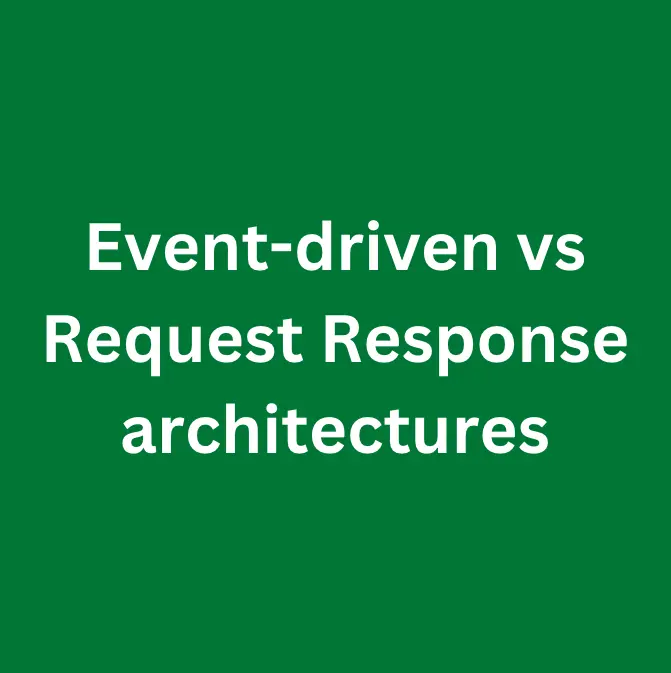· 4 min read
Event-driven vs request-response architecture
Event-driven architecture is a system design pattern in which the system reacts to specific events or triggers, like user input, and can handle many events simultaneously. Request-response architecture is a system design pattern in which a client sends a request to a server and the server responds with the requested information or performs the requested action.

In an event-driven model, the system reacts to specific events or triggers, such as a user clicking a button or a sensor detecting a change in temperature. In a request/response model, a client sends a request to a server and the server responds with the requested information or performs the requested action. Event-driven systems are often seen as more efficient and scalable, as they can handle many events simultaneously and do not need to wait for a request in order to take action. The request/response model is more commonly used in traditional client-server architectures.
Typical use cases for an event-driven model
Event-driven architectures are commonly used in situations where real-time data processing or immediate action is required. Some typical use cases include:
- Real-time streaming data: Event-driven systems can handle large amounts of data coming in at high speeds and process it in real-time, making it suitable for use cases like financial trading, IoT sensor data, and social media feeds.
- Microservices: Event-driven systems are well-suited for microservices architectures, as they allow for decoupling of services and enable them to communicate with each other through events.
- Distributed systems: Event-driven systems can handle distributed systems, where multiple components need to communicate and coordinate with each other. This can be useful for example in distributed databases or distributed systems for machine learning
- Game development: Event-driven systems are well-suited for game development, as they allow for the creation of complex, interactive environments that respond to player input in real-time.
- Cloud-native applications: Event-driven systems are often used in cloud-native applications, as they allow for the dynamic scaling of resources in response to changes in demand.
- Website Interaction: Event-driven systems are used to handle user interactions on a website like clicks, form submissions, and scrolling.
Examples when not to use event driven architecture
Event-driven architectures are well-suited for many types of systems, but there are some situations where they may not be the best choice. Some examples of when not to use event-driven architectures include:
- Simple, single-purpose systems: If the system only needs to perform a single task and does not require real-time data processing or immediate action, a traditional request/response architecture may be more appropriate.
- Systems with low throughput: If the system is not expected to handle a high volume of events, an event-driven architecture may be overkill and a simpler request/response architecture may be more appropriate.
- Systems with low complexity: If the system is relatively simple and does not require the decoupling of services or the coordination of multiple components, a traditional request/response architecture may be more appropriate.
- Systems with high latency: If the system requires very low latency, an event-driven architecture may be more difficult to implement as it requires more complex infrastructure and a more complex communication mechanism
- Systems that require strict ordering of events: Some systems may require that events are processed in a specific order, in this case an event-driven architecture may not be the best fit as the order of events may not be guaranteed.
Use cases for traditional request/response architecture
Traditional request/response architectures are commonly used in situations where a client sends a request to a server and the server responds with the requested information or performs the requested action. Some typical use cases include:
- Simple web applications: Request/response architectures are well-suited for simple web applications, such as static websites or basic CRUD (create, read, update, delete) applications.
- Traditional client-server systems: Request/response architectures are often used in traditional client-server systems, such as desktop software that communicates with a central server.
- Backend for mobile apps: Request/response architectures are commonly used as the backend for mobile apps, where the app sends requests to a server to retrieve data or perform actions.
- E-commerce: Request/response architectures are used in e-commerce platforms, where a user sends a request to the server to retrieve product information, add items to a cart, or complete a purchase.
- Content management systems: Request/response architectures are used in content management systems, where a user sends a request to the server to retrieve content or to perform actions such as updating or deleting content.
In general, request/response architectures are well-suited for situations where the system needs to handle a relatively small number of requests and where the requests are relatively simple and well-defined.